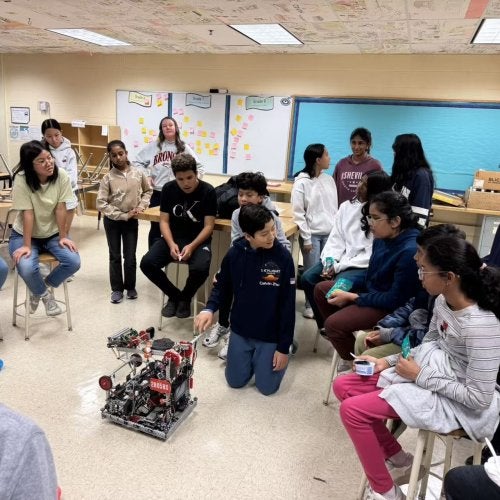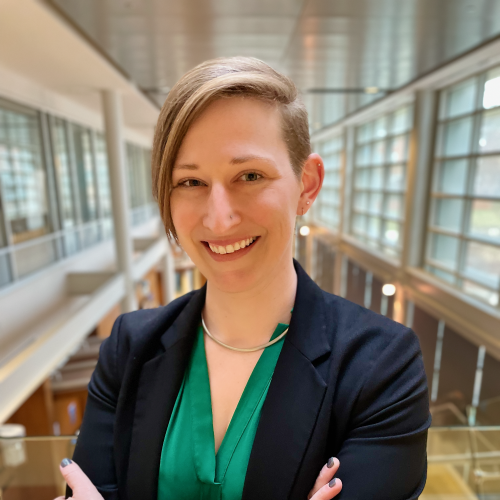
M-Powering Teachers: Using Machine Learning to Measure and Improve Equity in K-12 Mathematics Classrooms is funded by a Grand Challenges Team Project from the University of Maryland. This project is developing, evaluating and refining a tool called M-Powering Teachers, which uses machine learning techniques–a subset of artificial intelligence (AI)--to analyze audio recordings of classrooms. The tool provides teachers with more frequent, timely feedback on their teaching practices than a human observer can deliver. This helps educators teach more equitably and support student learning. Although M-Powering Teachers has broad applications, this project focuses specifically on K-12 math classrooms and teachers’ equity-focused teaching practices.
M-Powering Teachers is one of 11 projects involving College of Education faculty that were funded by Grand Challenges Grants earlier this year. In all, the university awarded more than $30 million to 50 projects addressing pressing societal issues, including educational disparities, social injustice, climate change, global health and threats to democracy. The Grand Challenges Grants Program is the largest and most comprehensive program of its type in the university’s history.
Jing Liu, assistant professor in education policy, leads this project as principal investigator and works with colleagues from the A. James Clark School of Engineering and the College of Information Studies. Liu discusses how machine learning can help teachers continuously improve their practice and can ultimately lead to more equity in the classroom.

Why is it important for teachers to have access to feedback?
Just like students need feedback to learn better, teachers also need high-quality feedback to learn where their strengths are and how to improve. Because human-based classroom observation is very time- and labor-intensive, U.S. public school teachers only receive feedback once or twice per school year on average, far from enough to support their professional growth. In particular, students from low-income, minoritized backgrounds tend to be concentrated in districts where teachers don’t have a lot of professional development opportunities to get feedback.
How will M-Powering Teachers make a difference?
My team has combined rich educational theory, cutting-edge machine learning techniques and state-of-the-art natural language processing models to build a tool called M-Powering Teachers. The M here stands for Machine Learning.
With M-Powering Teachers, we transcribe classroom recordings in real time and provide teachers with high-quality feedback that is timely, specific and actionable. It can be applied on a large scale with a very low cost. It can provide teachers who are serving in high-poverty districts with feedback on equity-focused teaching practices so they can understand what they are doing well, continuously improve, reduce learning opportunity gaps and serve all their students better. For example, it will help them determine whether some students are getting more support and attention than others.
We will engage teachers in the AI development process, center their voices and learn about their needs and what kinds of feedback they want. We will also open source the software to accelerate other research on applying natural language processing in education.
How will you ensure that the technology is ethical and fair?
We’re putting a lot of time and resources into building a dataset that we can use to train the AI that is high quality, unbiased and representative of different populations. We are using classroom recordings from U.S. mathematics classrooms.
Next we will conduct a randomized controlled trial to see whether this intervention can improve teaching practice related to equity and also reduce achievement gaps between student racial and ethnic groups.
We are also refining existing automated speech recognition systems to better transcribe students’ voices with more precision and less bias. These systems can be biased toward people who speak standard American English as their dominant language. We’re working to make the technology function better for multilingual learners and African American Language speakers, for example.
How do you hope teachers will use this technology?
We hope that teachers will find the support and feedback helpful and that they will use the tool to reflect on their practice and improve on a daily basis. We know that teachers are busy. They have a full schedule every day. We want this technology to fit into their schedule seamlessly so that they form a habit of checking how they are doing and improving each day. That’s a really positive and healthy loop to engage in.


